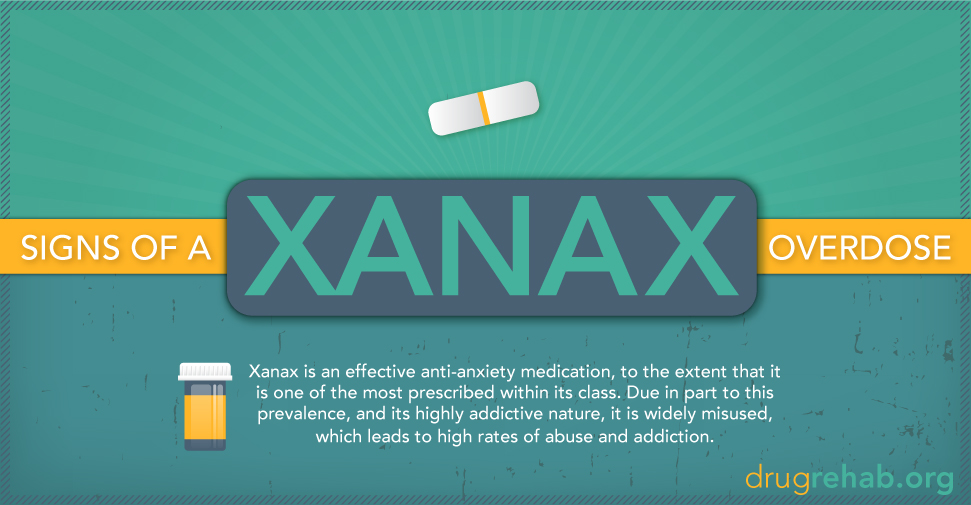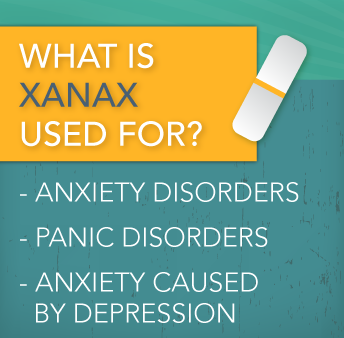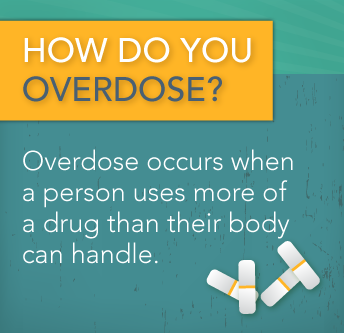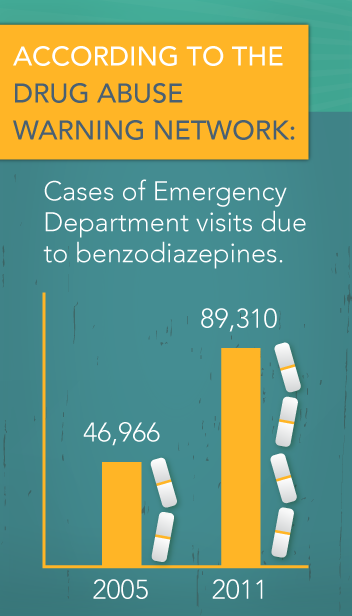
Xanax is an effective anti-anxiety medication; it is one of the most prescribed within its class. Due in part to this prevalence and its highly addictive nature, it is widely misused, which leads to high rates of abuse and addiction. Research demonstrates that benzodiazepines, often referred to as a “benzos,” are second only to opioid analgesics in terms of unintentional overdose.
Xanax is one such benzodiazepine. When used to this extent, it puts a person in a position to experience potentially harmful and even dangerous side effects, one of which is overdose, to the point at which it can be fatal.
How Does Xanax Impact Your Body And Brain?
In order to understand an addiction to this substance, we need to understand the mechanisms of action by which the drug works and its purpose when used as a prescription medication. This will also help us to understand why excessive amounts of the drug can exert effects that lead to overdose.
 When used properly, Xanax (alprazolam) holds the potential to be a valuable tool in fighting generalized anxiety and other more extreme panic disorders, by helping people to combat their stress and maintain emotional and mental stability in their life. Xanax works towards depressing your central nervous system in a way that creates a calming state and the characteristic signs of sedation.
When used properly, Xanax (alprazolam) holds the potential to be a valuable tool in fighting generalized anxiety and other more extreme panic disorders, by helping people to combat their stress and maintain emotional and mental stability in their life. Xanax works towards depressing your central nervous system in a way that creates a calming state and the characteristic signs of sedation.
This occurs because the drug works on altering the production of gamma-aminobutyric acid, GABA for short, specifically, it increases the amounts of this neurotransmitter, allowing GABA’s natural effects to be further enhanced. This heightened capacity within your brain inhibits certain nerve transmissions, which presents as decreased excitability within the brain.
Xanax has a very short half-life, which is one reason why it works so quickly, and also why it holds such potential for dependence and overdose. As the drug’s influence wanes, a person may use more, in a greater quantity and frequency, to continue feeling it and to avoid symptoms of withdrawal.
How Is This Drug Used Illicitly?
Many times, illicit use begins with prescribed use, which can even happen when a person starts using the drug in the properly prescribed way. Xanax has a large potential for physical dependence, and for this reason, a person may begin to develop a tolerance, finding that the amount they were prescribed no longer works to fully alleviate their concerns.
As a person has experienced the drug’s positive effects, they may begin to use more of it—without a doctor’s recommendation—in the hopes of further suppressing the symptoms they’re trying to quash. What is dangerous about this misuse and self-medication is that a person is not only reducing their symptoms, but they are increasing the chemical burden and potential for damage on their body, as their body is not immune to the toll of these higher doses.
What Causes An Overdose?
An overdose can happen either intentionally or unintentionally, occurring when your body is so overburdened by the drug that its systems begin to behave differently or shut down. The extent of overdose is impacted by several things, first being the individual’s genetic makeup and unique physiology, including any illnesses or diseases that might be present. It also includes a person’s history of use, the amount and frequency of drug use, method of administration and any other concurrent drug use.
 Xanax is available in an extended-release version. What this means is that the pill is meant to be taken in its whole form, due to the fact that it is designed in a manner that gradually releases the medicine into your body. Sometimes when a person is abusing Xanax, they will alter the pill, either crushing it or breaking it apart. This affects the drug’s absorption, allowing it to be assimilated into your body quicker, creating a higher risk of overdose.
Xanax is available in an extended-release version. What this means is that the pill is meant to be taken in its whole form, due to the fact that it is designed in a manner that gradually releases the medicine into your body. Sometimes when a person is abusing Xanax, they will alter the pill, either crushing it or breaking it apart. This affects the drug’s absorption, allowing it to be assimilated into your body quicker, creating a higher risk of overdose.
Ultimately, overdose occurs when a person uses more of a drug than their body can handle. If a person who uses illicitly has a tolerance, they are at a higher risk for overdose, because they are more apt to use an increased amount without medical supervision.
How Does The Overdose Manifest?
It is important to understand the symptoms of overdose so that you receive appropriate medical treatment, in the hopes of avoiding any further complications or a fatality. What might seem strange is that in an overdose setting, Xanax can actually cause some of the conditions that it was created to treat, including agitation and anxiety.
Here are the signs of a Xanax overdose:
- Confusion
- Blurred vision
- Seeming intoxicated
- Weakness and/or a sense of somnolence or drowsiness
- Dizziness, may be marked by, or occur independently from decreased coordination
- Impaired reaction time and reflexes
- Troubles with coordination or other motor skills, including ataxia, and difficulty walking or talking
- Low blood pressure (hypotension)
- Slowed heart beat
- Respiratory depression
- Coma
If you even begin to suspect that you or someone you love has overdosed, you need to seek medical attention immediately, where you will be closely monitored to prevent further danger.
What Are The Risks Of Overdose?
For those who suffer from addiction or are using Xanax in a way other than prescribed, their actions are not without the possibility of deadly consequences. Though it is true that overdose from Xanax can range from mild to severe, and that the instance of acute toxicity and death from benzodiazepines isn’t as high as some, in the worst of these instances Xanax can cause coma or death.
 According to the Drug Abuse Warning Network, cases of Emergency Department visits due to benzodiazepines alone rose from 46,966 in 2005, to 89,310 in 2011, which is just over a 50 percent increase.
According to the Drug Abuse Warning Network, cases of Emergency Department visits due to benzodiazepines alone rose from 46,966 in 2005, to 89,310 in 2011, which is just over a 50 percent increase.
Overdose leading to coma or death is more probable when Xanax is paired with other drugs, especially other CNS depressants, including alcohol. These interactions may also cause hallucinations, met with decreased reaction time and impaired coordination, which may put a person at an even greater risk for accidents, falls and head injuries. These events may also cause death.
The Journal of Pharmacy Practice published findings on the dangers of benzodiazepine overdose in relation to opioid use. They echo cautionary mention that these classes of drugs can present greater risk of overdose when combined. Additionally, they note that between 1999 and 2009, benzodiazepine related deaths rose by five times. This research presents some startling news—within the period between 2003 and 2009, alprazolam was second to only oxycodone in terms of increased death rates, at 233.8 percent and 264.6 percent, respectively.
One study, “Alprazolam is relatively more toxic than other benzodiazepines in overdose,” focused on the toxicity of Xanax in comparison to other benzodiazepines. Although the study focused on intentional self-poisoning, the results may be somewhat applicable in the understanding of an overdose from illicit drug use.
While the amount of Xanax may at times be significantly more in this case, when compared to that which precipitates an unintentional overdose, we can still see how this drug has the potential to be more destructive than other benzos. Researchers noted, “this greater toxicity appears due to intrinsic toxicity of alprazolam. Alprazolam overdose should be regarded as more significant than other benzodiazepines.” Keep in mind, any overdose situation is serious, however, this sheds light on the fact that special considerations need to be taken into account in the case of a Xanax overdose.
How Is An Overdose Treated?
Depending on the severity, a person may require ventilation. Intravenous fluids will likely be given and vital signs will be monitored, especially cardiac and respiratory rates.
Medscape informs us that flumazenil, a benzodiazepine receptor antagonist, can be used for benzodiazepine (BZD) poisoning, however, they note that its use is disputed, as the risks may negate the benefits. They elaborate on this, stating “In long-term BZD users, flumazenil may precipitate withdrawal and seizures; in patients taking BZDs for a medical condition, flumazenil may result in exacerbation of the condition.” They continued to say that when this drug is used, it may work best in “BZD-naive patients,” meaning those that don’t have a history of benzodiazepine abuse.
On the other hand, another study spoke of its benefit, reporting that “In the setting of isolated benzodiazepine overdose, flumazenil is capable of completely reversing coma within one to two minutes, with this effect lasting between one and five hours.”
An overdose is indicative of a problem, one that requires supportive care and treatment. Xanax abuse and addiction can bring disorder and harm to a person’s mental, physical and emotional states.
Let Us Help You Find An Equilibrium
 At DrugRehab.org, we want you to realize that sobriety and good health are possible. If you’re concerned that your drug use is accelerating to the point where you might be in danger of experiencing an overdose, please contact us today. We can direct you towards the best methods of care and treatment for benzodiazepine-related substance use disorders, including those due to Xanax.
At DrugRehab.org, we want you to realize that sobriety and good health are possible. If you’re concerned that your drug use is accelerating to the point where you might be in danger of experiencing an overdose, please contact us today. We can direct you towards the best methods of care and treatment for benzodiazepine-related substance use disorders, including those due to Xanax.
Sources
MedlinePlus — Alprazolam
American Family Physician — Addiction: Part I. Benzodiazepines—Side Effects, Abuse Risk and Alternatives
Medscape — Benzodiazepine Toxicity
Substance Abuse and Mental Health Services Administration — Benzodiazepines in Combination with Opioid Pain Relievers or Alcohol: Greater Risk of More Serious ED Visit Outcomes
Medscape — Benzodiazepine Toxicity Medication
